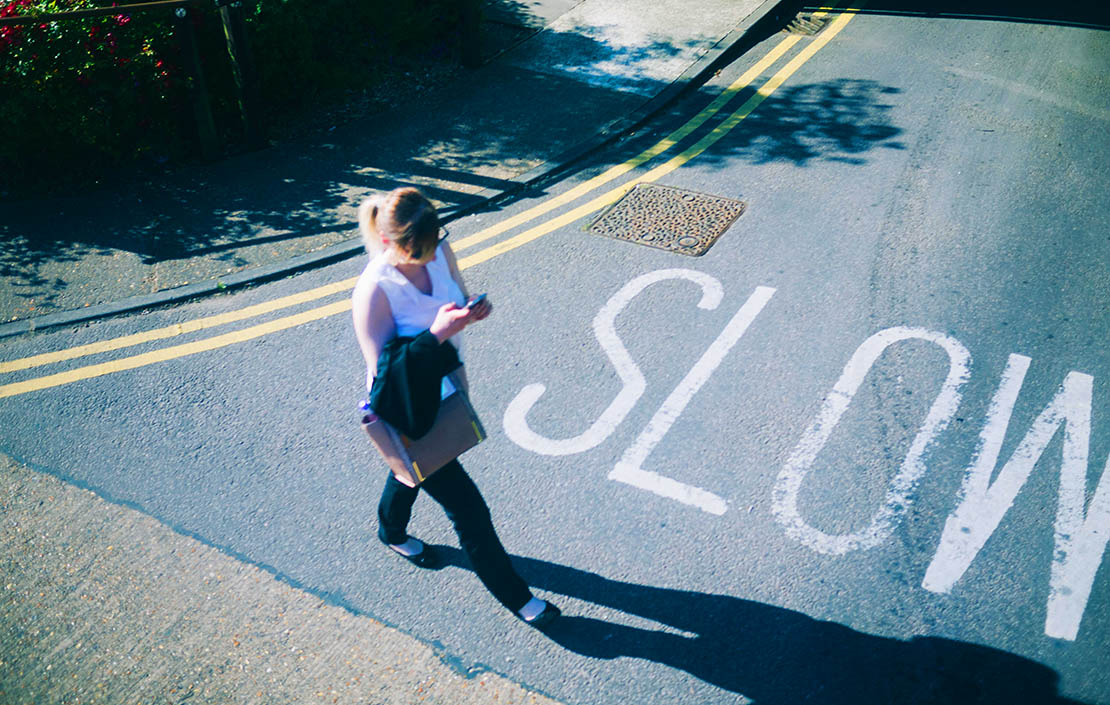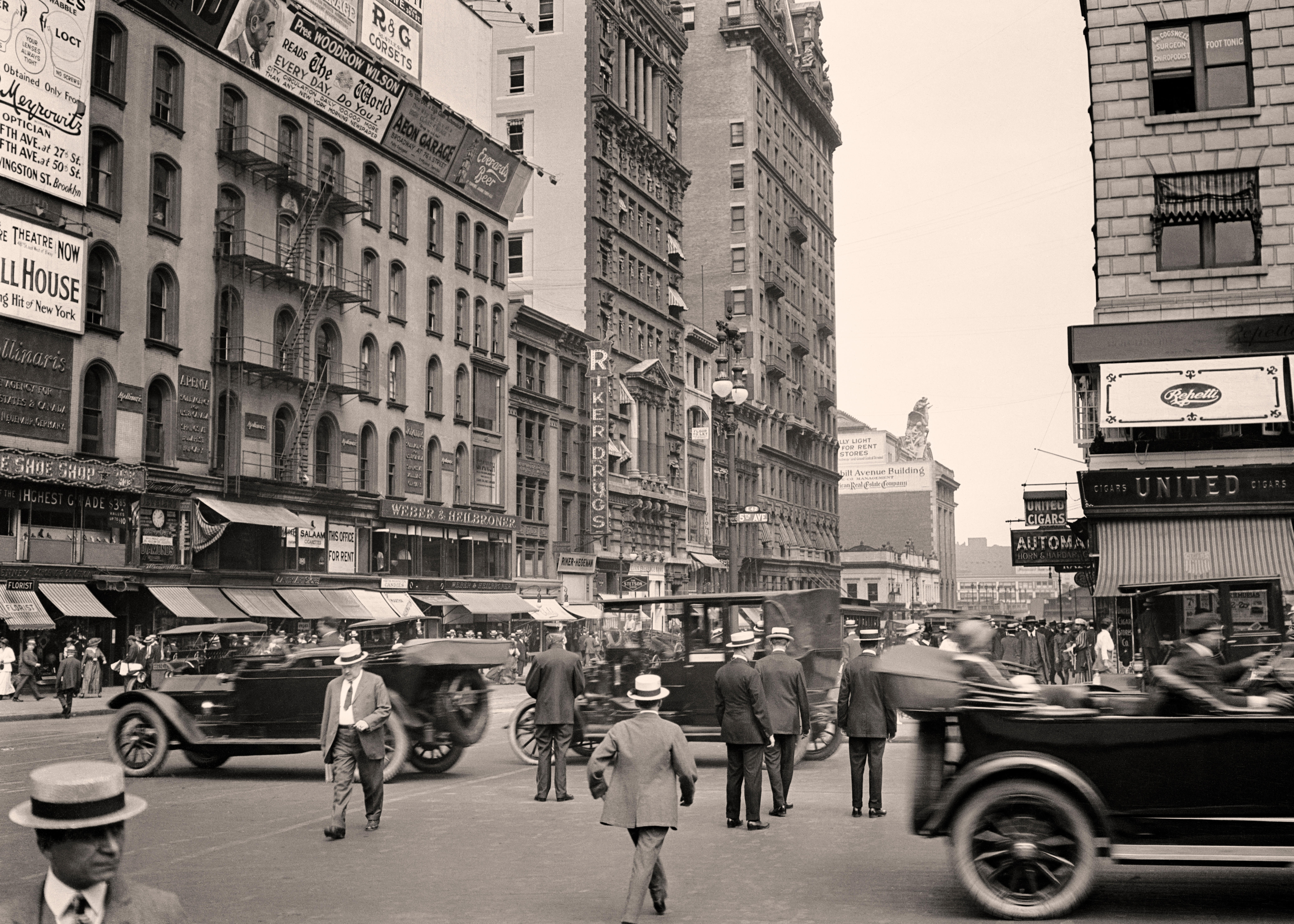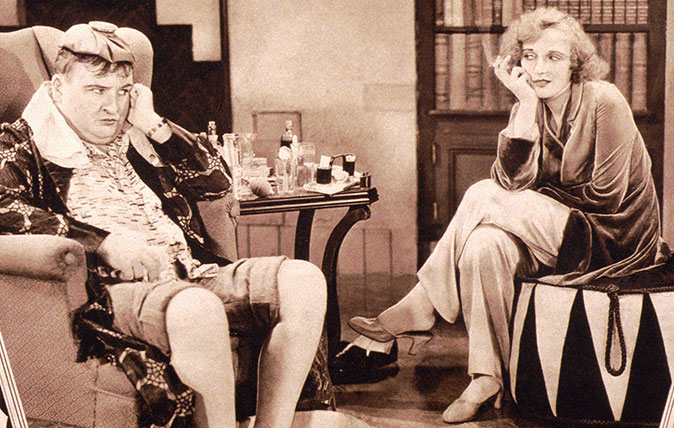Curious Questions: Why is walking down the middle of the road called 'jaywalking'?
The ubiquity and addictiveness of the smartphone has meant that now more than ever pedestrians blunder into the street, unaware of the traffic around them. But where did jaywalking get its odd name? Martin Fone explains all.


I don’t go up to London much these days, country mouse that I am, but when I do, I’m constantly amazed by how many march around, eyes glued to their smart screens, oblivious to their surroundings. These 'smombies' – the rather ugly, if useful, abbreviation for a smartphone zombie – practise an extreme form of jaywalking, presenting a danger to fellow pedestrians and motorists alike.
The classic jaywalker would cross a street at a point other than a designated pedestrian crossing point. A certain degree of nimbleness and acute observational senses were required to ensure that a career as a jaywalker was not a short-lived one. In some countries (most notably the USA) it is illegal, earning the perpetrator a rebuke and an invitation to contribute to the civic coffers.
The origin of the name is with an occasional visitor to our garden: Garrulus Glandarius or, as we non-ornithologists call it, the jay. It makes its presence known with a raucous call and the splash of colour as it flies around is a sight to behold, although I’m not sure that the smaller birds are as pleased to see it.
But what has the name of this bird, not known for its ambulatory prowess, erratic or otherwise, become associated with jaywalking?
Initially, it was all to do with its colourful plumage and noisy song. To be as 'jolly as a jay', in medieval times, was to be very happy and full of joy. But in the early 16th century the word developed a more pejorative sense, being used to describe someone who was an impertinent chatterer or a loud and flashy dresser.
The Americans took to using jay in a figurative sense with some gusto. In the late 19th century it was used to describe a simpleton, a hick from the countryside or a dupe, something that was worthless or fourth-rate. Barrere and Leland’s Dictionary of Slang, Jargon and Cant from 1889 defines a jay as 'an American pejorative term for a sham swell or simpleton.'
So the first syllable of jaywalking conveys the speaker’s contempt for a simpleton or show-off who, in wandering in and off the road, shows no concern for their own well-being or that of others.
Exquisite houses, the beauty of Nature, and how to get the most from your life, straight to your inbox.

But interestingly, in the context of road use, jay was initially used to describe drivers rather than pedestrians. Perhaps this is understandable as driving a car was a relatively new experience for many and the rules of the road were few and far between. Those rules that did exist put restrictions on the side of the road that these new-fangled vehicles were to drive upon, and also the speed at which they could travel.
In the age of the pedestrian, there was nothing more annoying than to have to dive for cover when a car, bicycle or a horse, ridden or driven at an ungodly speed, came hurtling in their direction. Helpfully, the Emporia Gazette in Kansas, on July 13th 1911, defined, for the edification of its readership, a jay driver as 'a species of the human race who, when driving either a horse or an automobile, or riding a bicycle on the streets, does not observe the rules of the road. It is the custom of the jay driver to drive on the wrong side of the road.'
This, though, was the last hurrah for the pedestrian. As early as 1909 the Chicago Tribune, in what is probably the first printed usage of the term, noted that 'chauffeurs assert with some bitterness that their joyriding would harm nobody if there were not so much jaywalking.' By 1913 a newspaper from Indiana’s Fort Worth completed the about-turn by defining a jaywalker as 'an alleged human being who crosses the street at other points than the regular crossings.'
That wasn't the end of the story. Pedestrians killed beneath the wheels of a car sparked outrage and newspaper headlines, particularly since those who died were disproportionately children and the elderly, and in many cities – notably Cincinnati – there were movements to restrict cars. But in the early years of the 1920s, lobbying and PR efforts by the car manufacturers shifted the focus from drivers to pedestrians. Quite quickly, it was the jawyalkers who were deemed to be at fault, as explained by academic and author Peter Norton in his 2008 book Fighting Traffic: The Dawn of the Motor Age in the American City.
Jaywalking was not solely an American phenomenon, The New York Times in January 1937 noted that 'in many streets like Oxford Street, for instance, the jaywalker wanders complacently in the very middle of the roadway as if it was a country lane.' This one sentence brings us back to the concept of jay as a simpleton, a hick from the sticks.
The term 'jay driving' sank into obscurity as the car took over – time for a revival, perhaps - but jaywalking is still very much with us.
Martin Fone is the author of Fifty Curious Questions. His new book, '50 Scams and Hoxes', is out now.

Credit: Alamy
Curious questions: Are you really never more than six feet away from a rat?
It's an oft-repeated truisim about rats, but is there any truth in it? Martin Fone, author of 'Fifty Curious Questions',

Credit: Photo by FLPA/Hugh Lansdown/REX/Shutterstock – Bullet Ant (Paraponera clavata) adult, standing on leaf in rainforest, Tortuguero N.P., Limon Province, Costa Rica
Curious Questions: What is the world’s most painful insect sting – and where would it hurt the most?
Can you calibrate the intensity of different insect stings? Martin Fone, author of 'Fifty Curious Questions', investigates.

Curious Questions: What is the perfect hangover cure?
If there's a definite answer, it's time we knew. Martin Fone, author of 'Fifty Curious Questions', investigates.

Credit: Rex
Curious Questions: Why do we still use the QWERTY keyboard?
The strange layout of keyboards in the Anglophone world is as bafflingly illogical. Martin Fone, author of 'Fifty Curious Questions',
After graduating in Classics from Trinity College Cambridge and a 38 year career in the financial services sector in the City of London, Martin Fone started blogging and writing on a freelance basis as he slipped into retirement. He has developed a fearless passion for investigating the quirks and oddities of life and discovering the answers to questions most of us never even think to ask. A voracious reader, a keen but distinctly amateur gardener, and a gin enthusiast, Martin lives with his wife in Surrey. He has written five books, the latest of which is More Curious Questions.
